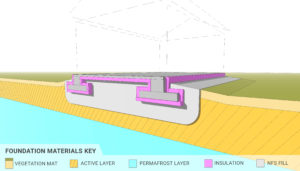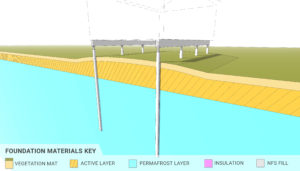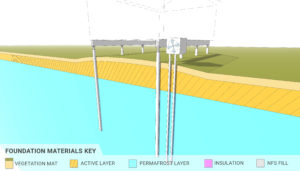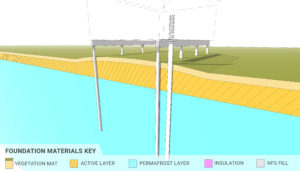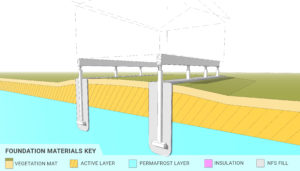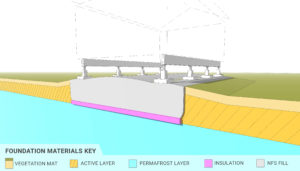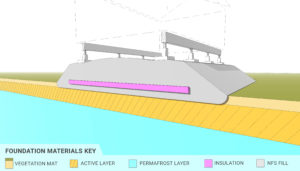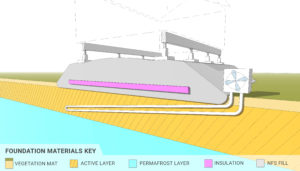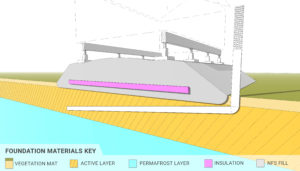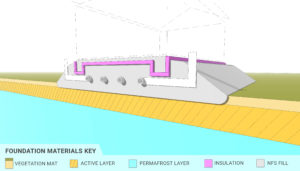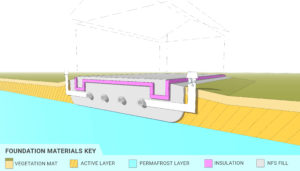Foundation Types for Permafrost
Heat transfer through the foundation of a home can be sufficient to thaw permafrost. The rate of thaw depends on the temperature of the building, the amount of insulation in the floor and/or foundation, the type of air space or ventilation, make up of the ground, and the ambient air/ground temperatures.
In a thaw-stable scenario, a conventional foundation design can be used like one used in a temperate climate. When thaw unstable ground materials are found (such as fine-grained soils or rock containing ground ice) the most common approach is to maintain the existing thermal regime of the ground by using, for instance, a piling foundation. This is considered the passive method. Alternatively, the design approach could assume that construction will change the thermal regime and plan accordingly (the active method).
The following gallery depicts passive and active foundation designs. The actual foundation chosen will depend on specific site conditions. Click on an image to see a larger version with a brief description.
References
Sanger, F. (1969). Foundations of Structures in Cold Regions. Hanover, NH: Cold Regions Research & Engineering Laboratory.
U.S. Army Corps of Engineers. (2004). United Facilities Criteria:Foundations for Structures, Arctic and Subarctic Construction. Washington, D.C.: United States of America Department of Defense.
